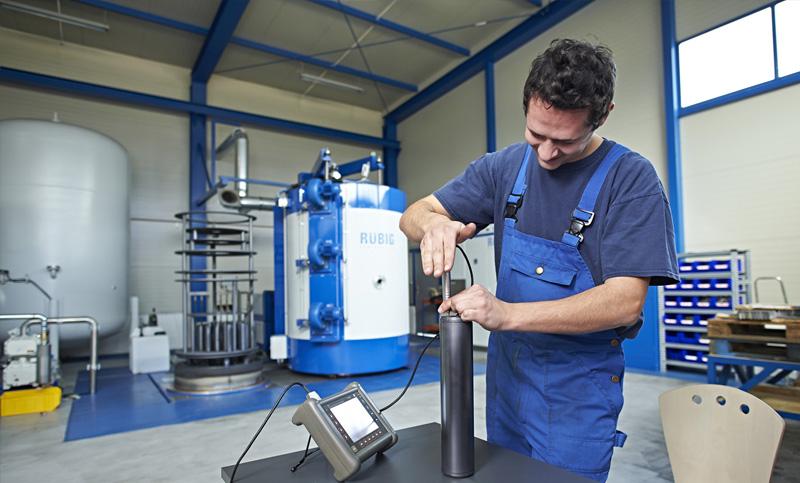This substance is everywhere.
It's in your kitchen, your car, your house, the buildings you work in and the bridges you drive on.
What is it? The same thing we've been using to build civilizations for thousands of years:
Steel.
Starting with blacksmithing, humanity has been working with steel for so long we've dedicated entire industries to heating and shaping steel compounds to fit our needs. Today there are countless ways to heat, bend, harden, and chemically alter steel to fit whatever purpose we need it to serve.
Here we briefly discuss how the heat treatment of steel works, and why the heat treatment of metals is so vitally important to our modern world.
Read on to learn basics about the steel heat treating process.
Why Steel is Treated
Steel is one of the most common substances in the world, and we would not function as a society without it.
Put simply, steel is an alloy made from a combination of iron and other elements. There are different types of steel depending on what other elements are used alongside iron.
For quality assurance purposes, all the following have to be present in order for an alloy to be called steel:
- Aluminum
- Carbon
- Manganese
- Nitrogen
- Oxygen
- Phosphorus
- Silicon
- Sulfur
Plenty of other elements can be added to change the properties of the steel as desired, but those listed above must be present. The exact ratio of all these elements will affect the steel's hardness, durability, flexibility, etc.
There are also specifications for how much of each element there can be in steel alloy before it has to be called something else.
For example, cast iron is an alloy much like steel that contains more than 2.1 percent carbon. Wrought iron is a similar alloy to cast iron but contains very little carbon in comparison, making it easier to twist and bend.
Steel is engineered for its final purpose starting with the elements used to make it. That rough metal alloy then needs to be treated with heat in such a way that it can be shaped and cut into a final product.
So, how does the heat treatment process work?
Methods of Heating and Hardening
Here's where things start to get interesting.
There is a critical temperature of steel that makes it malleable and begins to change its chemical structure. Steel heated above this temperature enters what is called the austenite phase.
From there, engineers can create the correct shape and quality steel they need. There are many methods used to heat treat steel, including but not limited to:
- Annealing - Heating and then slowly cool steel to refine it and make it softer
- Carburizing - Adding carbon to the surface with heat and carbon-rich substances
- Case hardening - Carburizing and quickly cooling steel to keep the center soft while the rest hardens
- Cyanide hardening - Like case hardening, but using molten cyanide salt for the hard case instead of carbon
- Decarburization - Removing carbon from the steel alloy either with heat or oxidation
- Nitriding - Adding nitrogen to the surface of steel with heat and nitrogen-rich liquid or gas
- Drawing or Tempering - Reheating steel that has already been cooled to a specific temperature to remove hardness

Taking unrefined steel alloy through various heat treatment processes is the only way to make all the finished steel parts we use. Not every steel product needs to go through all of the steps above, but all steel needs to be treated.
If you're starting to get overwhelmed, just remember most rough steel alloy goes through three basic steps:
- Annealing
- Quenching
- Tempering
Let's break down what each of these means.
Annealing vs Tempering Steel
This is where a lot of people get confused.
Steel is heated beyond its critical temperature for the annealing process. High temperatures used for annealing send steel into its austenite phase. During this phase, the grain quality of the steel changes.
When hot steel is cooled and solid again, it cannot be used as is. Heat treated steel must be tempered before it can be used as a commercial material. Tempering is also heating steel, but this time below the critical temperature.
Tempering steel is a way to make hardened steel less brittle and change its durability to suit your needs. Each steel project may require a different heat level for tempering, but tempering never pushes steel back into the austenite phase.
Quenching (or Setting) Steel
Still with me so far?
Quenching is the industry term for rapidly cooling hot steel to make it hard again. Depending on the project, hot and malleable steel will be dipped in either water or oil to cool. This brings the steel back to a solid state and often leaves it brittle.
Heat treated steel can also be left to air cool. But as mentioned in the different steps of heat treatment above, the way steel is cooled will greatly affect its finished quality.
As you may have gathered by now, the same steel will be heated and quenched many times. This is to make sure it is ready to support buildings, bridges, or whatever structure for decades to come.
Aren't you glad all of this is left to the professionals?
Heat Treatment of Steel
There you have it, folks. Looks like you're ready to build your own skyscraper.
(Just kidding.)
To recap:
- All steel is an alloy of iron and a variety of other elements
- All steel has to be treated in order to be used in commercial products
- The heat treatment of steel generally always involves annealing, quenching, and tempering.
If you found this blog post helpful, check out how we harden and temper our steel right here in our family owned steel mill.


